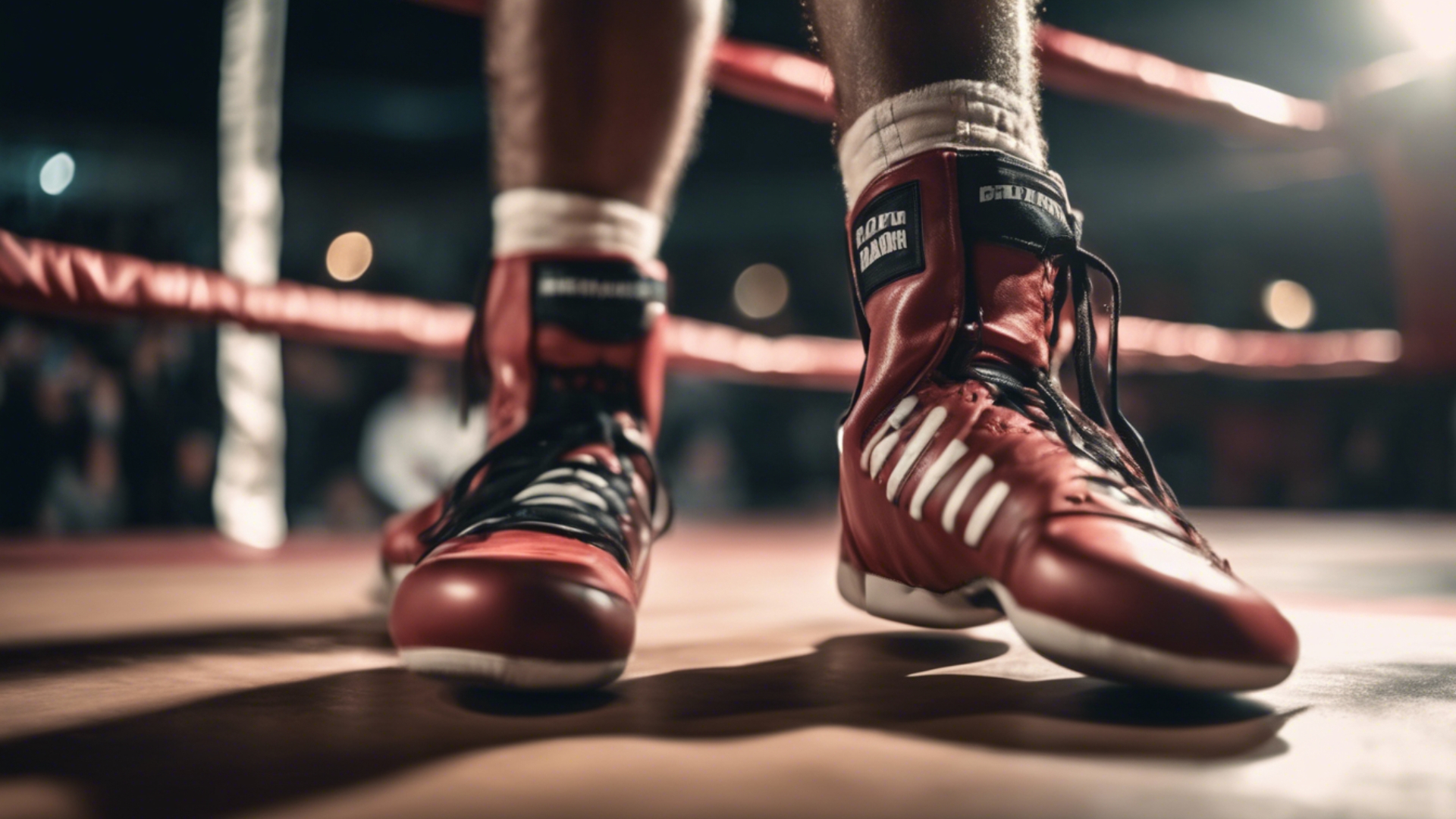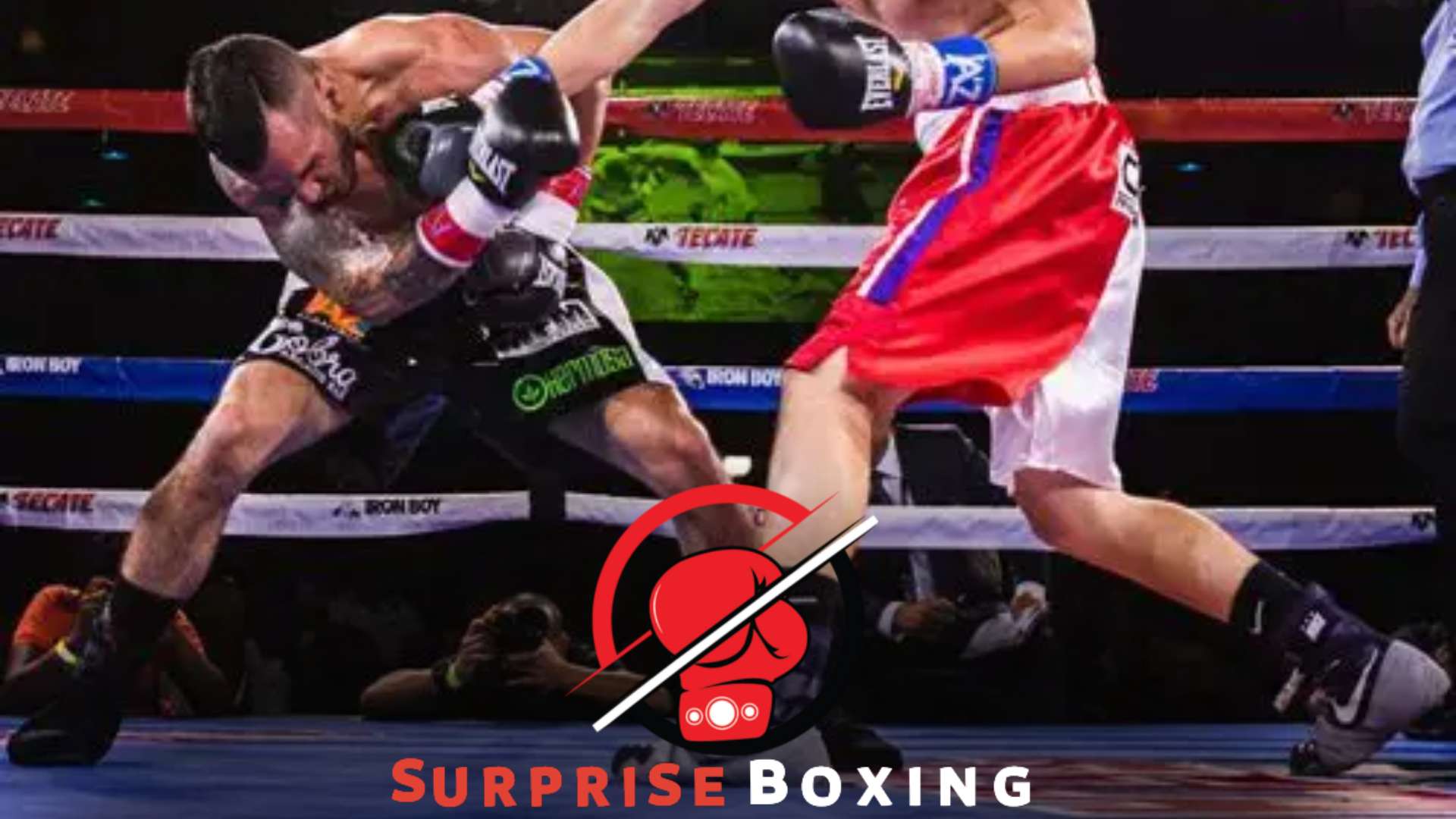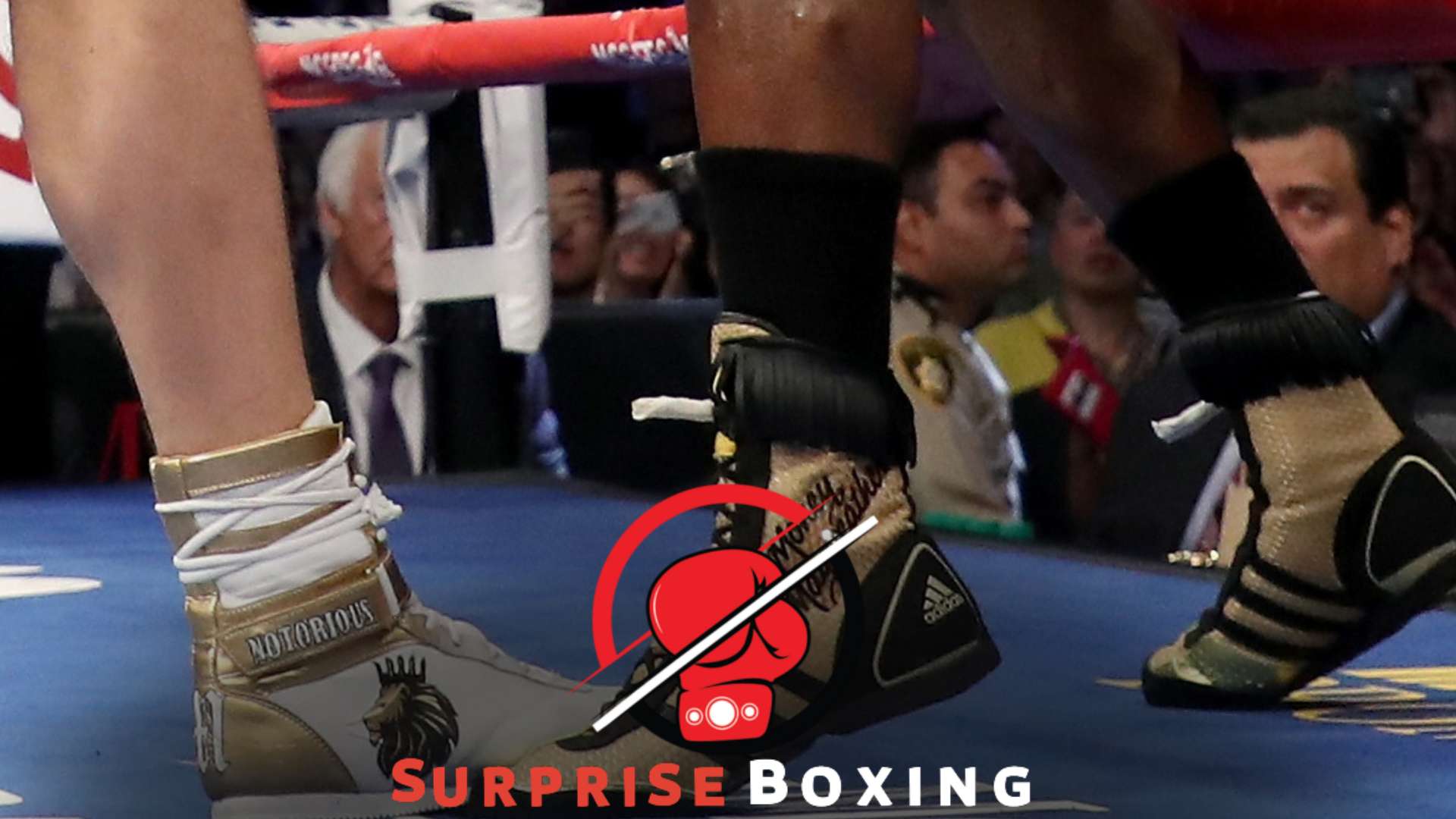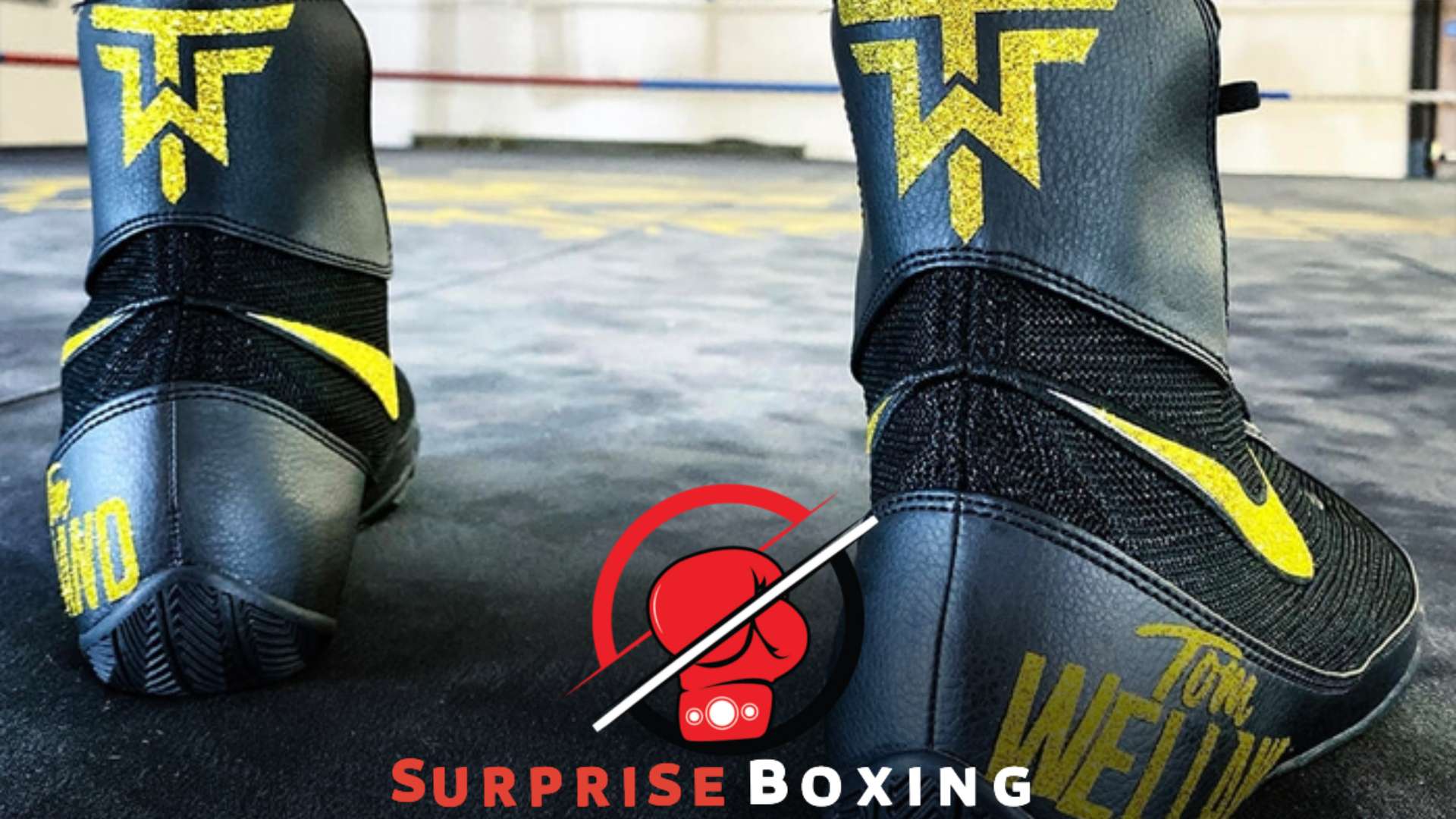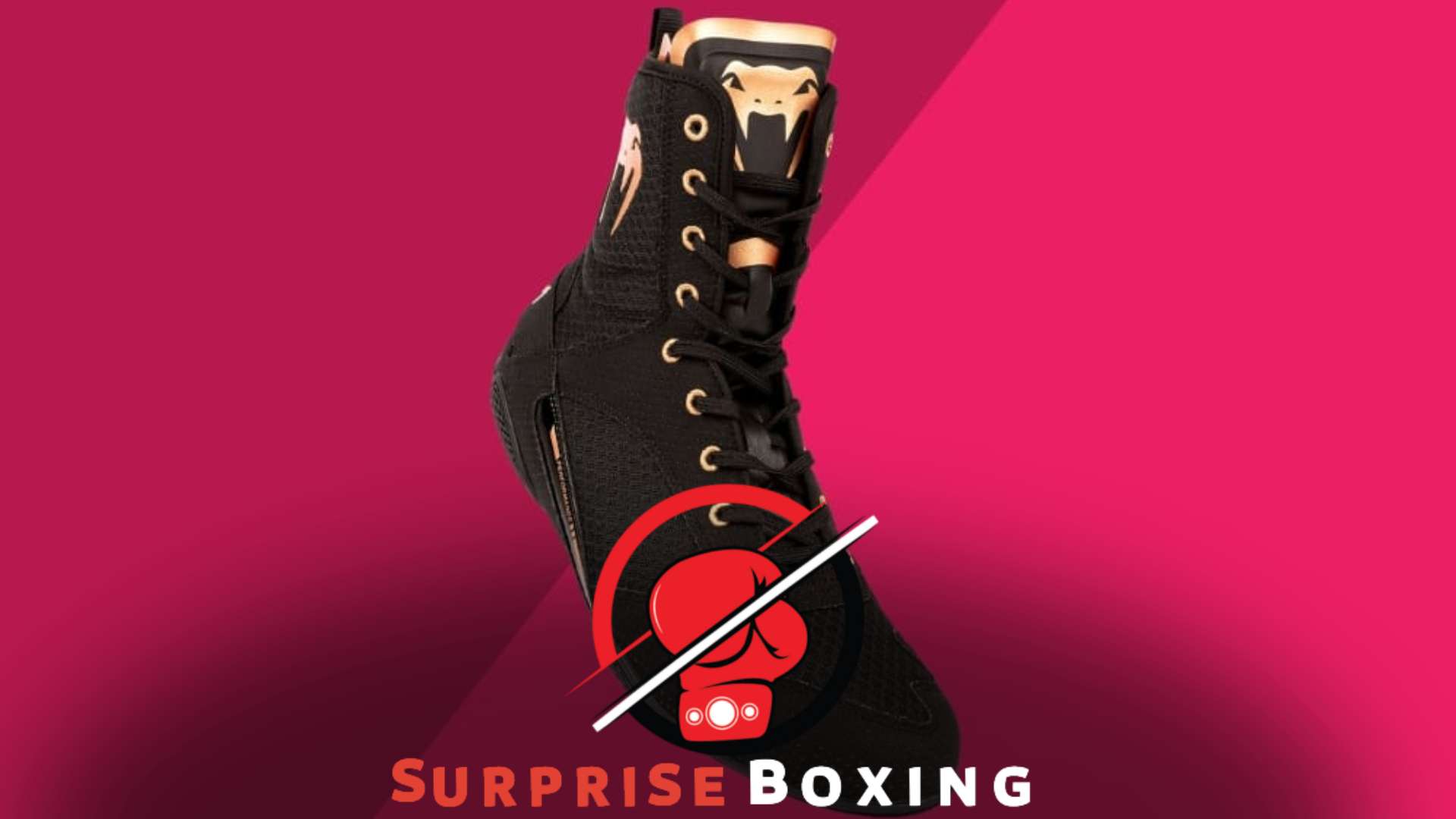Running shoes are not ideal for boxing due to their design and functionality.
Critical Distinctions in Design and Functionality: Running Shoes Vs. Boxing Shoes

Running shoes and boxing shoes have key distinctions in design and functionality. While running shoes are designed for comfort, cushioning, and support during long-distance running, boxing shoes prioritize agility, traction, and ankle stability for quick movements in the ring. Therefore, running shoes might not be the best choice for boxing due to their different purposes and features.
Running and boxing shoes may have similar purposes – to protect the feet and provide comfort during intense physical activity. However, it is essential to understand that these two types of footwear are designed specifically for their respective sports.
This section will explore the critical distinctions between running and boxing shoes in design and functionality.
Design Differences
- Running shoes typically have more cushioning and support to absorb the impact of the repetitive nature of running. They often feature a thick midsole, which helps in shock absorption and prevents injuries. On the other hand, boxing shoes are lightweight and low-profile, designed to provide agility and quick movements in the ring. They have minimal padding to reduce weight and allow for better control.
- Running shoes usually have a higher heel drop, which refers to the difference in height between the heel and the toe. This design feature promotes a heel-strike gait, ideal for runners. In contrast, boxing shoes have a much lower heel drop or flat sole. This flat sole allows boxers to maintain a balanced stance and pivot smoothly.
- The outsole of running shoes is usually made of durable rubber with a tread pattern that provides traction on various surfaces. It is designed for multiple directions to accommodate running motions. Conversely, boxing shoes have a thin, flat outsole made of rubber or suede. This allows boxers to feel the canvas or mat and have better grip and control during quick movements.
- The upper part of running shoes often consists of breathable mesh materials to promote airflow and keep the feet cool during long-distance runs. It may also have overlays or support structures for stability. Conversely, boxing shoes have a lightweight and flexible upper made of materials like leather or synthetic leather. The upper is designed to offer ankle support, foot containment, and maneuverability.
Functional Differences
- Running shoes are engineered to provide cushioning and shock absorption over extended periods. They aim to reduce the impact on joints and prevent injuries associated with repetitive impact. In contrast, boxing shoes prioritize agility, quick movements, and traction on the canvas or mat. They allow boxers to pivot, dodge, and hurry without compromising stability.
- The cushioning in running shoes is typically more substantial and focuses on heel and forefoot support. This helps runners with forward propulsion and shock absorption during landing. Boxing shoes have minimal cushioning to maintain a low center of gravity and enhance the connection between the boxer’s foot and the ground.
- Running shoes often have arch support to stabilize and prevent pronation or supination issues. They cater to different types of arches and gait patterns. On the other hand, boxing shoes generally don’t prioritize arch support because flat soles allow for better balance and foot placement. Boxers require a neutral foot position to move efficiently and maximize power transfer.
While running and boxing shoes serve different purposes, both are designed with the athlete’s specific needs. Understanding the critical distinctions in design and functionality can help athletes choose the proper footwear for their respective sports and optimize their performance while minimizing the risk of injury.
Critical Considerations for Selecting Appropriate Boxing Footwear
Boxing footwear plays a crucial role in maximizing performance and preventing injuries. While running shoes may provide comfort and support, they lack the features for agile movements and stability required in boxing. Opting for specialized boxing shoes ensures optimal performance and reduces the risk of foot and ankle injuries.
Are you considering incorporating boxing into your fitness routine but wondering if your trusty running shoes will suffice? While running shoes may seem convenient, it’s essential to consider the key factors when selecting appropriate footwear for boxing.
Here are some important considerations to keep in mind:
Boxing-Specific Features
- Look for boxing shoes that are specifically designed for the sport. These shoes are tailored to provide the necessary support, stability, and traction for quick footwork and lateral movements in the ring.
- Boxing shoes typically have a low-top design to allow for ankle mobility. This helps minimize the risk of injury and allows for quick pivots and movements.
- Lightweight construction is another crucial feature to consider. Boxing shoes are designed with materials that provide breathability and agility, allowing you to move freely and swiftly during training or in the ring.
Proper Fit and Comfort
- When selecting boxing shoes, focus on finding the right fit. Properly fitting shoes provide a snug yet comfortable feel, ensuring your feet are supported and secure during intense training sessions or bouts.
- Consider your feet’ shape, size, and specific issues, such as bunions or arch support requirements. Different shoe brands may have varying sizes and fit, so take the time to try on other options if possible.
- Remember that comfort is crucial, as boxing involves a lot of footwork and agility. Pay attention to cushioning, insole support, and the overall feel of the shoe to ensure maximum comfort during training sessions and fights.
Traction and Stability
- Optimal traction is essential in boxing shoes. Look for shoes with a rubber sole and good grip, which helps you maintain stability and control during rapid movements and pivots.
- Ankle support is another factor to consider. Boxing shoes should provide enough support to prevent ankle injuries while allowing adequate mobility. Look for shoes with added support around the ankles, such as padded collars or ankle straps.
Durability and Longevity
- Boxing shoes go through a lot of wear and tear, so finding a pair that is durable and built to last is essential. Look for shoes made with high-quality materials that can withstand rigorous training sessions and prolonged use.
- Also, consider the type of surface you will predominantly train on. Some shoes may be better suited for indoor training, while others are designed to withstand outdoor environments. Choose a pair that matches your training environment to ensure longevity.
Personal Preference
- Ultimately, personal preference plays a role in selecting boxing footwear. Consider style, color, and overall aesthetics that align with your preferences. While these aspects may not directly impact performance, confidence in your shoes can contribute to your general mindset and focus during training or competition.
Considering these key factors, you can select appropriate boxing footwear that enhances your performance, minimizes the risk of injuries, and keeps you agile and comfortable in the ring. So lace up those boxing shoes and get ready to step into the sport confidently.
Pros and Cons of Using Running Shoes for Boxing: Evaluating Comfort, Versatility, and Performance Implications
Running shoes can provide comfort, versatility, and performance benefits for boxing. However, they may lack the stability and support needed for the specific demands of boxing footwork and movement.
Running shoes are famous for athletes engaged in various sports and activities. However, the suitability of running shoes becomes a matter of debate regarding boxing. This section will explore the pros and cons of using running shoes for boxing, focusing on comfort, versatility, and performance implications.
Comfort
- Cushioning: Running shoes are designed to provide superior cushioning to absorb the impact of running. This extra cushioning can offer comfort and protection during boxing training sessions.
- Fit: Running shoes are available in various sizes and styles, ensuring a snug fit that minimizes discomfort and enhances performance. Proper fitting shoes can prevent blisters and pain during intense boxing workouts.
Versatility
- Multi-surface use: Running shoes are engineered to perform well on various surfaces, including treadmills, trails, and pavement. This versatility makes them suitable for boxing drills that involve different types of footwork.
- Cross-training: Running shoes can be a practical choice if you engage in other cardio workouts or cross-training exercises alongside boxing. They can provide support and comfort for various activities, reducing the need for multiple pairs of shoes.
Performance Implications
- Impact absorption: The cushioning in running shoes can help absorb the impact of punches, reducing stress on the joints and minimizing the risk of injuries.
- Foot stability: Running shoes typically offer good stability, which can enhance balance and foot control during boxing movements. This stability can contribute to better overall performance.
- Traction: Running shoes are designed to provide traction on different surfaces, essential for maintaining stability and preventing slips or falls in the boxing ring.
While running shoes offer certain advantages for boxing, there are also some notable drawbacks to consider:
- Ankle support: Unlike boxing shoes, running shoes may not provide the same level of ankle support, which is crucial for preventing ankle injuries during quick lateral movements.
- Weight: Running shoes tend to be heavier than boxing-specific shoes. The additional weight can impact agility and speed, essential components of the boxing technique.
- Sole design: The sole of running shoes may not provide the optimal grip and pivotability required for boxing movements. This can affect the ease of lateral movements and swift direction changes.
Using running shoes for boxing presents both advantages and disadvantages. While they offer comfort, versatility, and specific performance benefits, the lack of specialized features for boxing-specific movements, such as ankle support and lightweight design, can limit their suitability. Ultimately, the choice between running shoes and boxing-specific shoes depends on individual preferences, training goals, and the specific demands of the sport.
Expert Opinions and Athlete Experiences: Shedding Light on the Suitability of Running Shoes for Boxing Training
Discover expert opinions and athlete experiences that shed light on the suitability of running shoes for boxing training, helping answer the question: are running shoes good for boxing? Gain valuable insights from professionals and firsthand accounts to make informed decisions about your footwear choices in boxing.
Running shoes are a commonly used footwear choice for athletes across various sports. Their lightweight design, cushioning, and flexibility make them ideal for activities that involve extensive running or cardio workouts. However, when it comes to boxing training, the suitability of running shoes has been debated.
To better understand whether running shoes are suitable for boxing, let’s explore some expert opinions and athlete experiences.
Expert Opinions
- Running shoes may lack the necessary support for lateral movements and quick pivots in boxing training. Without adequate stability, the risk of ankle injuries may increase.
- While running shoes offer cushioning for impact absorption during running, they may not provide the same level of shock absorption needed for intense footwork and jumping in boxing.
- Experts suggest that boxing-specific shoes are a better choice as they are designed to meet the sport’s unique demands. These shoes often feature a lower profile, improved traction, and reinforced toe areas to withstand frequent pivoting.
Athlete Experiences
- Many boxers prefer using boxing-specific shoes due to their superior stability and grip. These shoes allow them to maintain proper form and foot positioning, crucial for generating power and avoiding injury during quick movements.
- Some athletes, particularly those involved in running and boxing, find it convenient to use running shoes during boxing training sessions. They feel that running shoes offer sufficient cushioning and versatility for occasional boxing workouts without needing a separate pair.
- However, athletes who have tried using running shoes for boxing have reported instances of slipping, lack of lateral support, and discomfort during intense training sessions. These experiences have led them to switch to boxing-specific footwear for improved performance and safety.
While running shoes may be suitable for some aspects of boxing training, the consensus among experts and athletes leans toward using boxing-specific shoes. These shoes are designed to meet the sport’s unique demands, providing enhanced stability, support, and traction necessary for quick movements and minimizing the risk of injury.
Boxers must prioritize their safety and performance by opting for footwear tailored to their training needs.
Injury Risks and Safety Concerns Associated With Using Running Shoes for Boxing
Using running shoes for boxing poses injury risks and safety concerns. Due to their design, running shoes may lack the proper ankle support and stability needed for boxing movements, increasing the risk of foot and ankle injuries during training or matches.
Boxing-specific footwear is recommended to ensure optimal safety and performance in the sport.
Boxing is a physically demanding sport that requires quick footwork, agility, and stability. While running shoes may seem like a viable option for boxing, it’s essential to consider the injury risks and safety concerns associated with using them in the ring.
Here are some points to keep in mind:
- Lack of ankle support: Running shoes are designed to provide cushioning and shock absorption while running on a flat surface. However, they often lack the ankle support needed for the lateral movements and quick pivots required in boxing. This can increase the risk of ankle sprains or other injuries.
- Inadequate traction: Running shoes are designed to focus on forward motion, so they may not provide the necessary traction for the multidirectional movements involved in boxing. This can result in slips or falls, increasing the risk of injury.
- Cushioning vs. Stability: While running shoes are built for impact absorption and cushioning, boxing requires a balance between cushioning and stability. Excessive cushioning can hinder strength and throw off your balance during punches and footwork.
- Breathability and durability: Running shoes are typically designed to be lightweight and breathable, which may not necessarily translate well to the demands of boxing. Boxing shoes are often more durable and built to withstand the rigors of lateral movements and pivots.
- Weight distribution: Boxing shoes are designed to optimize weight distribution, ensuring that most of the weight is centered on the balls of the feet. This allows for quick movements and enhanced agility. Running shoes may distribute weight differently, affecting your footwork and overall performance.
It’s essential to prioritize safety and injury prevention when engaging in any sport, including boxing. While running shoes may seem convenient, investing in a pair of boxing-specific shoes designed specifically for the demands of the sport can significantly reduce the risk of injuries and enhance your performance in the ring.
Exploring Footwear Alternatives: Enhancing Boxing Performance and Safety
Discover how exploring footwear alternatives can enhance boxing performance and safety. Learn whether running shoes are suitable for boxing and how they impact the sport.
Running Shoes vs. Boxing Shoes: finding the proper footwear for optimal performance and safety
Regarding boxing, proper footwear significantly affects your performance and safety inside the ring. While running shoes may seem viable due to their comfort and cushioning, exploring other alternatives designed explicitly for boxing is essential.
We will discuss the pros and cons of running shoes and delve into footwear alternatives to help you enhance your boxing performance and reduce the risk of injuries. So, lace up your gloves, and let’s get started!
The Pros and Cons of Running Shoes for Boxing
Running shoes offer several benefits regarding comfort and support during workouts. However, they are not explicitly designed for the demands of boxing, which can affect your performance and safety.
Let’s take a closer look at the pros and cons of using running shoes for boxing:
- Comfort: Running shoes are known for their cushioning and shock absorption, providing comfort during long-distance running. This feature can benefit boxers who spend extended periods on their feet during training or sparring sessions.
- Versatility: Running shoes are typically designed for various types of terrain, making them suitable for different activities. This versatility allows boxers to use them for general fitness training or other non-boxing workouts.
- Lack of stability: Boxing requires quick footwork, lateral movements, and pivoting. With their thick cushioning and higher heel-to-toe drop, running shoes can compromise stability, making it harder to maintain balance and execute precise actions.
- Limited ankle support: Unlike boxing shoes, running shoes do not provide adequate ankle support. Ankle injuries are common in boxing; without proper permission, you are at a higher risk of sprains or twists.
Exploring Footwear Alternatives: Enhancing Boxing Performance and Safety
It is advisable to consider specialized boxing shoes or other suitable alternatives to optimize your boxing performance and reduce the risk of injury.
Here are some options to explore:
- Boxing shoes: Explicitly designed for boxing, these shoes prioritize features necessary for the sport. They have a low profile, lightweight construction, and sturdy soles that facilitate optimal footwork and enhance stability.
- Wrestling shoes: Wrestling shoes share similarities with boxing shoes, offering a low-cut design and excellent traction. While they may not provide the same ankle support as dedicated boxing shoes, they can be a viable option for boxers.
- Cross-trainers: Cross-training shoes are designed for versatility, balancing cushioning and stability. They offer better lateral support than running shoes and can be used for boxing workouts that involve diverse training exercises.
- Barefoot training: Some boxers prefer training barefoot to strengthen their foot muscles, improve balance, and facilitate a better connection with the ground. However, this approach requires caution as it increases the risk of foot injuries, mainly if you are not accustomed to barefoot training.
- Custom insoles: If you have specific foot conditions or require extra support, consider investing in custom insoles for your boxing shoes. These insoles can improve comfort and stability, reducing the likelihood of foot-related issues.
Remember, when selecting boxing footwear, prioritize lightweight construction, optimal traction, stability, and ankle support. Each boxer’s preference may vary, so trying different options to find the footwear that suits you best is essential.
So, whether you choose dedicated boxing shoes, wrestling shoes, cross-trainers, or even explore barefoot training, make an informed decision based on your specific needs. Your footwear can significantly impact your performance and minimize the risk of injuries, helping you unleash your full potential inside the ring.
Stay safe, stay nimble, and keep striving for greatness!
Recommendations for Boxers: Selecting the Right Footwear for Optimal Performance and Safety
Discover the key to optimal boxer performance and safety with the proper footwear selection. Running shoes, although comfortable, may not be the best choice for boxing due to the different support needed. Choose shoes designed explicitly for boxing to enhance your skills and protect your feet.
Are Running Shoes Good for Boxing?
Boxing is a dynamic and physically demanding sport requiring high footwork, agility, and quick movements. As a boxer, wearing the proper footwear is essential for optimal performance and safety in the ring. While running shoes may seem convenient, it’s necessary to understand their suitability for boxing.
This section will discuss the recommendations for boxers when selecting the proper footwear.
Comfort and Support: The Key Factors
Boxing involves a lot of footwork, including pivoting, lateral movements, and quick changes in direction. The right shoes can provide the necessary comfort and support for these movements, reducing the risk of injuries.
Here are some key factors to consider:
- Cushioning: Running shoes are designed to absorb impact while running, but they may not provide the same level of cushioning needed for the fast and explosive movements in boxing. Look for shoes with adequate padding in the forefoot and heel areas to ensure optimal shock absorption.
- Stability: Boxing requires excellent balance and strength. Opt for shoes with good lateral support to maintain stability during quick movements. To enhance stability, look for features like a broad base, reinforced sides, and ankle support.
- Flexibility: While running shoes are designed to provide flexibility for forward movements, boxing requires multidirectional footwork. Choose shoes that offer flexibility in the forefoot area, allowing you to pivot, twist, and change directions effortlessly.
Lightweight and Breathable Materials
Boxing is a sport that demands speed and agility. Heavy or restrictive shoes can hinder your movements and affect your performance. Consider the following:
- Weight: Lightweight shoes can give you a competitive edge by allowing quicker footwork and reducing fatigue. Look for shoes made from lightweight materials such as mesh or synthetic fabrics.
- Breathability: Your feet can get hot and sweaty during intense training sessions or bouts. Shoes with breathable materials allow air circulation, keeping your feet cool and dry. This can prevent discomfort and minimize the risk of foot infections.
Sizing and Fit
Proper sizing and fit are crucial for any athletic shoes, including those for boxing. Ill-fitting shoes can cause blisters and discomfort and even affect your performance. Keep the following in mind:
- The space: Your shoes should have enough toe space to allow for natural movement and prevent cramping. Ensure that your toes are not squished or overlapping.
- Width: Opt for shoes that match your foot’s width. Shoes that are too narrow can cause discomfort, while those that are too wide may not provide proper support.
- Ankle support: Although not all boxers prefer high-top shoes, ankle support is essential to prevent injuries and sprains. Choose shoes that provide adequate ankle support based on your preference and boxing style.
Durability
Boxing involves rigorous training sessions and consistent wear and tear on your shoes. Choosing durable footwear that can withstand the demands of the sport.
Consider the following:
- Outsole grip: Look for shoes with a durable outsole that offers excellent traction on various surfaces. This will enable you to maintain stability and prevent slips during intense movements.
- Quality materials: Investing in quality shoes made from durable materials can ensure their longevity and save you money in the long run.
Running Shoes and Boxing: Are They A Good Match?
Boxing is a sport that requires quick and agile footwork, which leads many athletes to wonder if running shoes can be used for this purpose. This section will comprehensively analyze whether running shoes are suitable for boxing.
Let’s dive in!
Pros of Using Running Shoes for Boxing
- Versatility: Running shoes offer excellent support and cushioning, making them suitable for various physical activities, including boxing.
- Comfort: The cushioning and padding in running shoes provide a comfortable fit, reducing the risk of foot fatigue during training sessions and bouts.
- Lightweight: Most running shoes are designed to be light, ensuring your footwork isn’t hindered by heavy and bulky footwear.
- Stability: Running shoes typically have a broad sole base that aids strength and balance, essential for effective boxing movements.
- Shock absorption: The impact of punches and footwork can put stress on your joints. Running shoes with ample cushioning can help reduce the impact and minimize the risk of injuries.
- Breathability: Many running shoes use breathable materials that allow proper airflow, preventing excess sweating and keeping your feet cool and dry.
Cons of Using Running Shoes for Boxing
- Limited ankle support: Running shoes generally provide minimal ankle support, which can be a concern in a sport like boxing that involves quick lateral movements and changes in direction.
- Traction on canvas: The sole of running shoes tends to be optimized for road or trail running, which may not provide sufficient grip on the canvas used in boxing rings.
- Lack of lateral stability: Running shoes prioritize forward motion, and their design may not offer adequate lateral stability needed for swift sidesteps and pivots in boxing.
While running shoes can offer certain advantages for boxing, it’s essential to consider the sport’s specific needs. Dedicated boxing shoes are designed to address the sport’s unique demands, providing better ankle support, traction, and lateral stability.
Investing in proper boxing shoes would be recommended if you are serious about boxing and want to optimize your performance. However, if you are a casual boxer or exploring the sport, using running shoes as a temporary solution is still viable.
Remember, comfort and safety should always be your top priorities when choosing footwear for boxing. Consider these factors and make an informed decision that aligns with your goals and needs in the ring.

Frequently Asked Questions on Are Running Shoes Good for Boxing
Is it Beneficial To Wear Running Shoes for Boxing?
Running shoes are not ideal for boxing as they lack the support and stability for quick lateral movements and pivoting. Boxing requires specialized footwear that provides ankle support, proper traction, and cushioning to avoid injuries. Investing in boxing shoes will optimize your performance and protect your feet.
Can Running Shoes Be Used for Boxing Training?
While running shoes might be suitable for light boxing workouts or cardio sessions, they are not recommended for intensive boxing training. The cushioning designed for running can hinder footwork and balance in boxing. It’s best to use boxing shoes to ensure the right support, traction, and stability for boxing-specific movements.
Why Are Boxing Shoes Better than Running Shoes for Boxing?
Boxing shoes are designed specifically for the sport’s unique demands. They offer superior ankle support, lightweight construction, optimal traction, and enhanced lateral movement. Running shoes prioritize cushioning and forward motion, making them less suitable for the quick footwork and pivoting required in boxing.
Invest in boxing shoes for better performance and injury prevention.
Conclusion
Overall, regarding whether running shoes are suitable for boxing, it is clear that the answer may vary depending on individual preferences and needs. While running shoes may provide certain benefits, such as cushioning and support, they may not be the ideal choice for boxing due to their design and intended purpose.
Boxing shoes, however, are specifically designed to provide the necessary stability, grip, and agility for optimal ring performance. It is essential to prioritize functionality when choosing footwear for boxing, as the wrong shoes can impede your movements and potentially lead to injury.
While running shoes may offer some advantages, investing in a proper pair of boxing shoes for your training and matches is recommended. Always consult a professional or experienced coach for personalized advice based on your needs and goals.
Choosing the proper footwear can enhance your performance and minimize the risks associated with improper footwear during boxing training and competitions.
